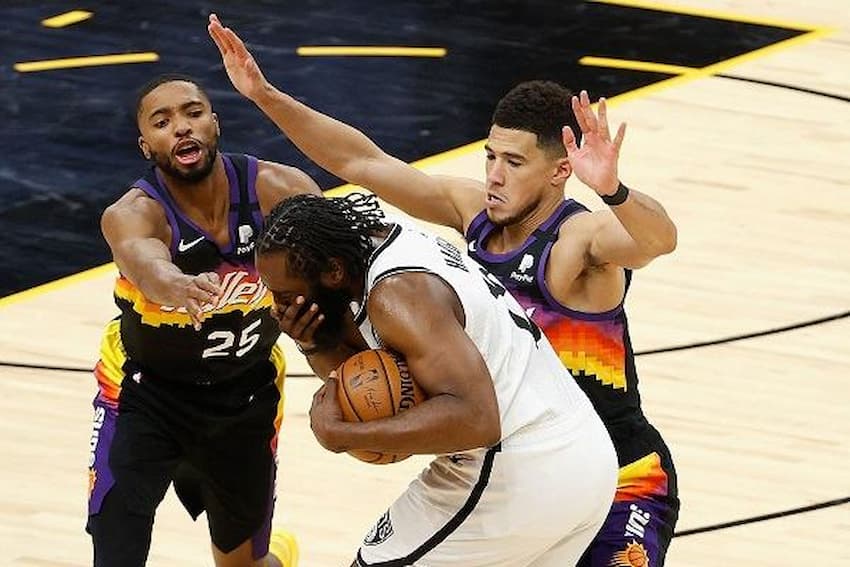Question: How many Fouls In Basketball NBA Until The Bonus? In basketball, a team can only commit so many fouls before the opposing team is awarded penalty free throws. Every level of basketball, along with the NBA, approaches penalty free throws differently.
How many Fouls In Basketball NBA must a team commit before reaching the bonus?

In the NBA, there are a few exceptions to the bonus rule. Overtimes and the final 2 minutes of each quarter are handled differently. Furthermore, some fouls don’t really count toward the bonus. This article will go over these details in greater detail, as well as start comparing the NBA bonus rule to the college basketball bonus rule.
How many Fouls In Basketball NBA are there before the bonus?
NBA Bonus Regulations
The NBA Bonus rule can be found in the official NBA rule book under Rule 12 Part B Section 5. The following are some examples:
“The first 4 main fouls dedicated by a team in any rules period shall result in the ball being winning to the opposing team on the sideline closest in which play was interrupted. The ball will be given no closer to the baseline than the extended free throw line.”
When an NBA team commits its fifth popular foul of the quarter, it is awarded penalty free throws. The fouled player will be awarded two free throws.
In college basketball, the first reward for joining the bonus is a one-and-one free throw opportunity, not two.
Every quarter and overtime, the bonus (also known as “the penalty”) is reset. This means that the bonus count begins at zero for each quarter and overtime.
There is no carryover of team fouls to the next quarter.
Which Fouls In Basketball NBA Count Toward the Bonus?
All fouls do not count toward the bonus. Only defensive and loose-ball fouls will be considered. Offensive fouls, such as illegal screens, charges, and push-offs, are not eligible for the bonus.
NBA Bonus Overtime Regulations

The overtime bonus rules differ slightly from the bonus rules throughout the regulation. According to the official NBA rulebook:
“The first 3 main fouls dedicated by a team in just about any overtime period, shall result in the ball of been awarded to the opposing team on the sideline closest where play was interrupted. The ball will be awarded no closer to the baseline than the extended free throw line.”
Since overtime periods are shorter than regular NBA quarters, fewer fouls are permitted (12 minutes). After each overtime period, team fouls are reset to zero, just as they are during regular quarters.
NBA Bonus Rules: The Final Two Minutes of the Period
The NBA’s bonus rules change in the final 2 minutes of a quarter or overtime. This applies only if a team has not yet earned the bonus. If they have already received the bonus, they remain in the bonus but nothing changes.
This rule is in place to prevent the final 2 mins of a period from devolving into a brawl. Consider a team that has no team fouls and only a minute and a half left in the quarter. If there was no two-minute bonus rule, the team would have four free fouls to offer late in the quarter.
This would enable defensive players to foul if they were beaten on a play and so as long as the offensive player wasn’t in the shooting motion, no free throws would be granted and the offensive team simply got the ball out of bounds.
It may appear that fouling is pointless because fouls are supposed to be bad and yet fouls slow down offenses and disrupt offensive rhythm. They can actually help the defense in certain situations if used correctly.
If a team had 4 fouls to give late and then used them, that’d muddy up the game as well as damage the overall product’s overall quality. As a result, the NBA implements the two-minute adjusted bonus rule, which awards free throws on the second most frequent foul.
Only defensive as well as loose-ball fouls count toward the bonus in the final two minutes, just like the regular bonus rule.
NBA Bonus Rules vs. NCAA Bonus Rules
The NBA Bonus regulations are very different from the NCAA Bonus rules. Another distinction is that in the NBA when a team reaches the bonus, they are awarded two free throws. In college basketball, teams are only given a one-and-one free throw circumstance for fouls 7, 8, and 9.
When a team fouls 10 times in a row, the bonus keeps changing from a one-and-one to a “double bonus,” which implies the team now gets 2 free throws.
Many experts fault men’s college basketball for not employing quarters. The disadvantage of performing two halves instead of 4 quarters is that quarters allow fouls to reset.
In an NBA game, if a team is getting in foul trouble during the first quarter, the quarter break enables the team’s fouls to reset to zero, allowing the team to avoid the foul penalty.
College basketball is criticized for not having a quarter break to reopen team fouls to zero. So, if one team fouls a lot to begin a half, the other team may end up shooting a lot of free throws for the rest of the half.
This is primarily criticized by experts for two reasons:
No one really came to the game as well as turned on the TV to enjoy a free throw shooting competition. It’s a muddy game, but it’s a muddy game. In addition, generally, nonfouls result in free throws, resulting in significantly less real game action.
Punishing a team for an entire segment for foul trouble seems excessive, and some experts believe that restarting the game at a quarter break would be a more equitable way to decide the game.
In conclusion
Here is all about Fouls In Basketball NBA until the bonus we would like to share with you! Don’t forget to share with us your thoughts in the comment box below.

